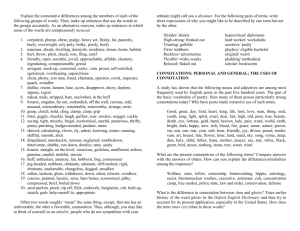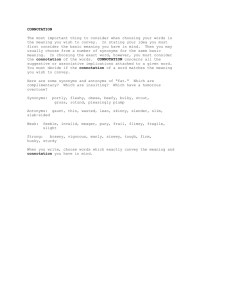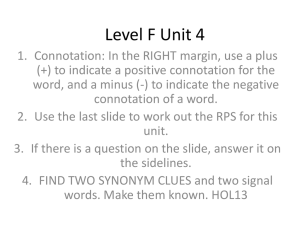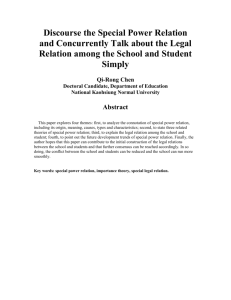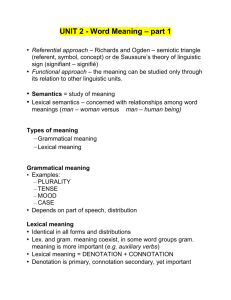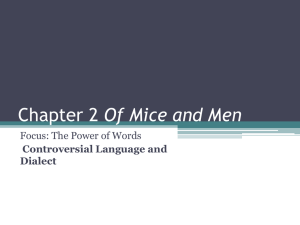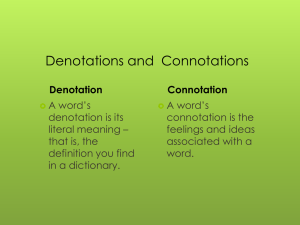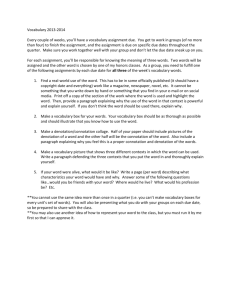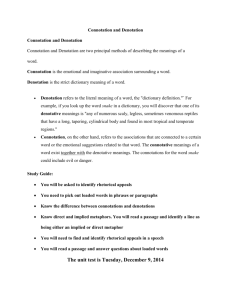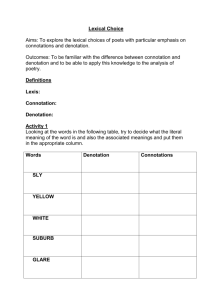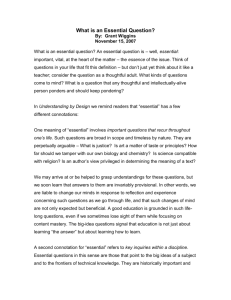Connotation - Renaissance Learning
advertisement
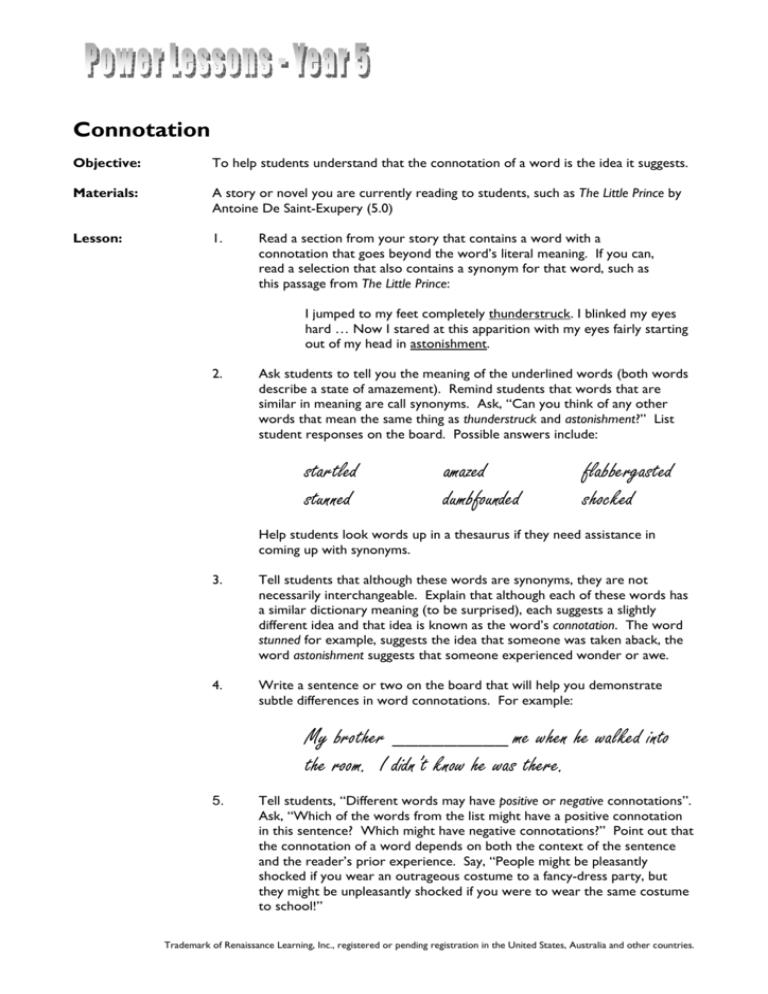
Connotation Objective: To help students understand that the connotation of a word is the idea it suggests. Materials: A story or novel you are currently reading to students, such as The Little Prince by Antoine De Saint-Exupery (5.0) Lesson: 1. Read a section from your story that contains a word with a connotation that goes beyond the word’s literal meaning. If you can, read a selection that also contains a synonym for that word, such as this passage from The Little Prince: I jumped to my feet completely thunderstruck. I blinked my eyes hard … Now I stared at this apparition with my eyes fairly starting out of my head in astonishment. 2. Ask students to tell you the meaning of the underlined words (both words describe a state of amazement). Remind students that words that are similar in meaning are call synonyms. Ask, “Can you think of any other words that mean the same thing as thunderstruck and astonishment?” List student responses on the board. Possible answers include: startled stunned amazed dumbfounded flabbergasted shocked Help students look words up in a thesaurus if they need assistance in coming up with synonyms. 3. Tell students that although these words are synonyms, they are not necessarily interchangeable. Explain that although each of these words has a similar dictionary meaning (to be surprised), each suggests a slightly different idea and that idea is known as the word’s connotation. The word stunned for example, suggests the idea that someone was taken aback, the word astonishment suggests that someone experienced wonder or awe. 4. Write a sentence or two on the board that will help you demonstrate subtle differences in word connotations. For example: My brother _________ me when he walked into the room. I didn’t know he was there. 5. Tell students, “Different words may have positive or negative connotations”. Ask, “Which of the words from the list might have a positive connotation in this sentence? Which might have negative connotations?” Point out that the connotation of a word depends on both the context of the sentence and the reader’s prior experience. Say, “People might be pleasantly shocked if you wear an outrageous costume to a fancy-dress party, but they might be unpleasantly shocked if you were to wear the same costume to school!” Trademark of Renaissance Learning, Inc., registered or pending registration in the United States, Australia and other countries. 6. Invite students to search for words in their books that have positive or negative connotations. Explain that thinking about a word’s connotations can help them recognise when an author wants them to think or feel a certain way about the information they are reading. Status of the Class Follow up: As you take the Status of the Class, ask: • • • Added Practice: Have you noted a word that has a connotation that goes beyond its dictionary meaning? (Point to a word in the student’s book.) Does this word have a positive or negative connotation in this sentence? How would the meaning of the sentence change if the author used a word with a different connotation? Suggest that students write sentences from their books. For each sentence, have them replace a key word with a blank as you did on the board. Encourage others to offer words that work within the context of the sentence. Discuss how each word changes the meaning of the sentence. Have students work in pairs. Suggest that one student name a word that has a positive connotation, such as the word thrifty. Then have the other partner come up with a synonym for the adjective that has a negative connotation, such as the word cheap. Other examples that you might provide students to get them started are: persistent/stubborn, shiny/glitzy, talkative/gossipy. Trademark of Renaissance Learning, Inc., registered or pending registration in the United States, Australia and other countries.
